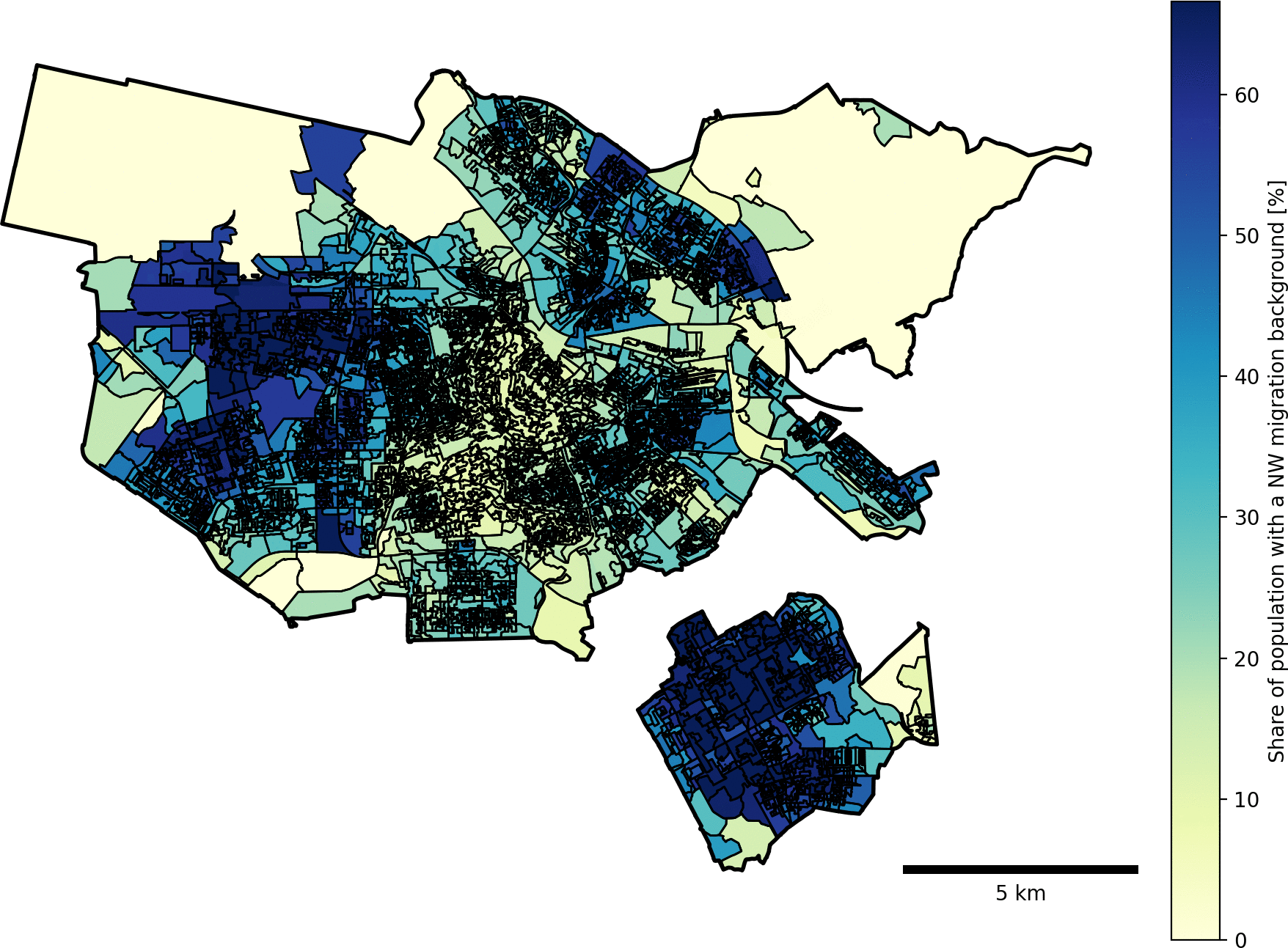Evolution of residential segregation patterns in the Netherlands between 2015 and 2020
While Dutch cities are celebrated for their livability and social equity, they also hide a stark truth: social groups sometimes live worlds apart. This is especially true when looking at the population with a migration background. Unfortunately, this divide isn't just geographical; it hampers integration, perpetuates existing inequalities, and fuels fragmentation within society. Let's take Amsterdam as an example!

A scientific publication is currently under review. If you are interested in the results, please contact me at contact-me@lucas-spierenburg.eu.
Details
Written by Lucas Spierenburg
Supervised by Sander van Cranenburgh and Oded Cats
at the TU Delft, 2023
References
Credits
Raw data from CBS and OpenStreetMap.
Analysis conducted using scikit-learn, Geopandas, and OSMnx.
Data story realized with d3.js and scrollama.